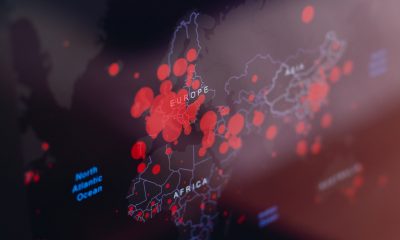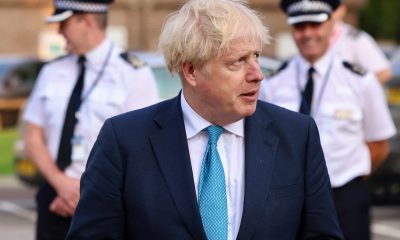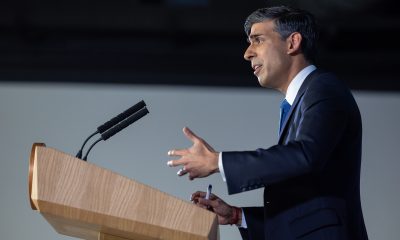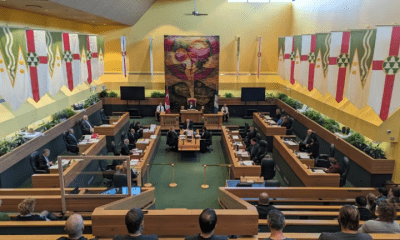Lifestyle
Philippine presidents: a look at the Philippines’ past and present
As we draw closer to the next Presidential elections, many of us should ponder anew, “What are the qualities that we should look for in a president?”
While there may no exact answer to this question, we can be guided by history.
- Pres. Emilio Aguinaldo was the first president of the Philippine Republic, having successfully steered the country to independence from the oppressive Spanish regime. On the side, however, he tried and executed Bonifacio, the other hero. And their Magdalo (Aguinaldo)-Magdiwang (Bonifacio) factions still accurately depict Philippine politics, which is rife with bitter disputes, lust for power and betrayals.
- President Manuel Quezon had a temperamental type of leadership. He passionately declared, “I prefer a government run like hell by Filipinos than a government run like heaven by Americans,” and again freed the country from colonial subjugation. Almost 80 years later, some ask why we are still run like hell by Filipinos. (oh, right, we declared it to be so)
- President Jose P. Laurel was the president during the Japanese occupation. He is seen by history, though, as a war collaborator and even a traitor; and it was during his presidency that Manila was crippled by hunger. Under his watch, it is said that the Japanese committed rapes and other atrocities against the Filipino people.
- President Sergio Osmena was the gentleman president. When his time came to assume presidency by automatic succession (as was the law at that time), he agreed to give way to Quezon when the latter issued a statement that “it would not be wise and prudent to effect any such change under the circumstances”. He became president upon the death of Quezon, however. When he ran for reelection, he did not campaign—saying that Filipinos were aware of his honest and faithful service. He lost to President Roxas, who garnered 54% of the votes.
- President Manuel Roxas was the first elected head of state of the Philippines. He accomplished the transition that transformed the then-colony to an independent state.
- President Elpidio Quirino was viewed as a good president but his administration was tainted with graft and corruption. His years as president were marked with post-war reconstruction, general economic gains, and increased economic aid from the United States. During his time, the Philippines was second to Japan in Asia economically. The then-exchange rate was two pesos to a dollar.
- President Ramon Magsaysay, who was an automobile mechanic and a guerilla leader in his early life, was sworn into office wearing the Barong Tagalog, a first by a Philippine president. His administration was considered one of the cleanest and most corruption-free; his presidency was cited as the Philippines’ Golden Years. His term, however, was cut short by a plane crash.
- President Carlos P. Garcia was a teacher, poet, orator, lawyer, public official, political economist and guerrilla leader and during his presidency, was known for his “Filipino First Policy”, favouring Filipino businessmen over foreign investors, which was the antithesis of the then-policy, “What is good in America is also good in the Philippines.” He also initiated the “Austerity Program”.
- President Diosdado Macapagal worked to suppress graft and corruption and to stimulate the economy. He introduced the first land reform law to alleviate the plight of poor farmers. However, his many reforms were thwarted by the Nacionalista Party, and he eventually lost to the charismatic Congressman Marcos during reelection time.
- President Ferdinand Marcos had intelligence, foresight and a phenomenal memory. His plans were idealistic and futuristic; but he succumbed to greed for power and money and his administration was marred by massive authoritarian corruption, despotism, nepotism, political repression, and human rights violations. When he assumed the presidency, he said “This nation will be great again.” 20 years after, the Philippines was proclaimed as the “Sick Man of Asia.” He was ousted by a peaceful revolution.
- President Corazon Aquino was thrust into the role of leader when her husband, Senator Benigno “Ninoy” Aquino, was assassinated allegedly by the powers-that-be. It was an uphill battle for Ninoy’s widow; she oversaw the promulgation of the 1987 Constitution and initiated reforms during her presidency. But more work needed to be done to unravel the culture of corruption that was the legacy of the Marcos dictatorship.
- President Fidel Ramos was a major player in the Marcos administration, being the then-Vice Chief of Staff of the Armed Forces of the Philippines. However, upon deflection of the then-Defense Minister Juan Ponce Enrile, he followed suit and helped catapult President Aquino to presidency. His administration was allegedly one of compromised leadership, because he came to power through the help and support of divergent groups.
- President Joseph “Erap” Ejercito Estrada was an actor and the long-time mayor of the City of San Juan before he ran for the presidency and won. However, allegations of corruption hounded his administration. This started an impeachment trial in the Senate, and in 2001 Estrada was ousted by “People Power 2”. He was also tried for plunder in 2007, and was the first Philippine President who was impeached and then convicted. He was thereafter pardoned by then-President Gloria Macapagal-Arroyo. He is currently the Mayor of Manila.
- When President Gloria Arroyo succeeded to the presidency upon the impeachment of President Estrada, much was expected of her. She was an accomplished educator and had good political background. However, her nearly-10 years term of office was tainted with election-rigging allegations and corruption. She is currently facing electoral sabotage charges but is on hospital arrest.
- President Noynoy Aquino was a congressman with a less than stellar record in the House of Representatives. He was the first bachelor president; does not drink but smokes; the first president who was a graduate of Ateneo de Manila University. The public first took notice of him during the wake and funeral of his mother, the late President Cory Aquino. His election battle cry was “Daang Matuwid” but the road is proving to be crooked with expose upon expose of the misuse of public funds. However, he restored investor confidence and only time will tell if he will adhere closely and passionately to his “Daang Matuwid”.
Let us learn from the past as we head on to the future. Overseas Filipinos, through the Absentee Voting Act, can have a hand in how the next leader of the Philippines will be selected. Let us exercise this right and choose well.






















